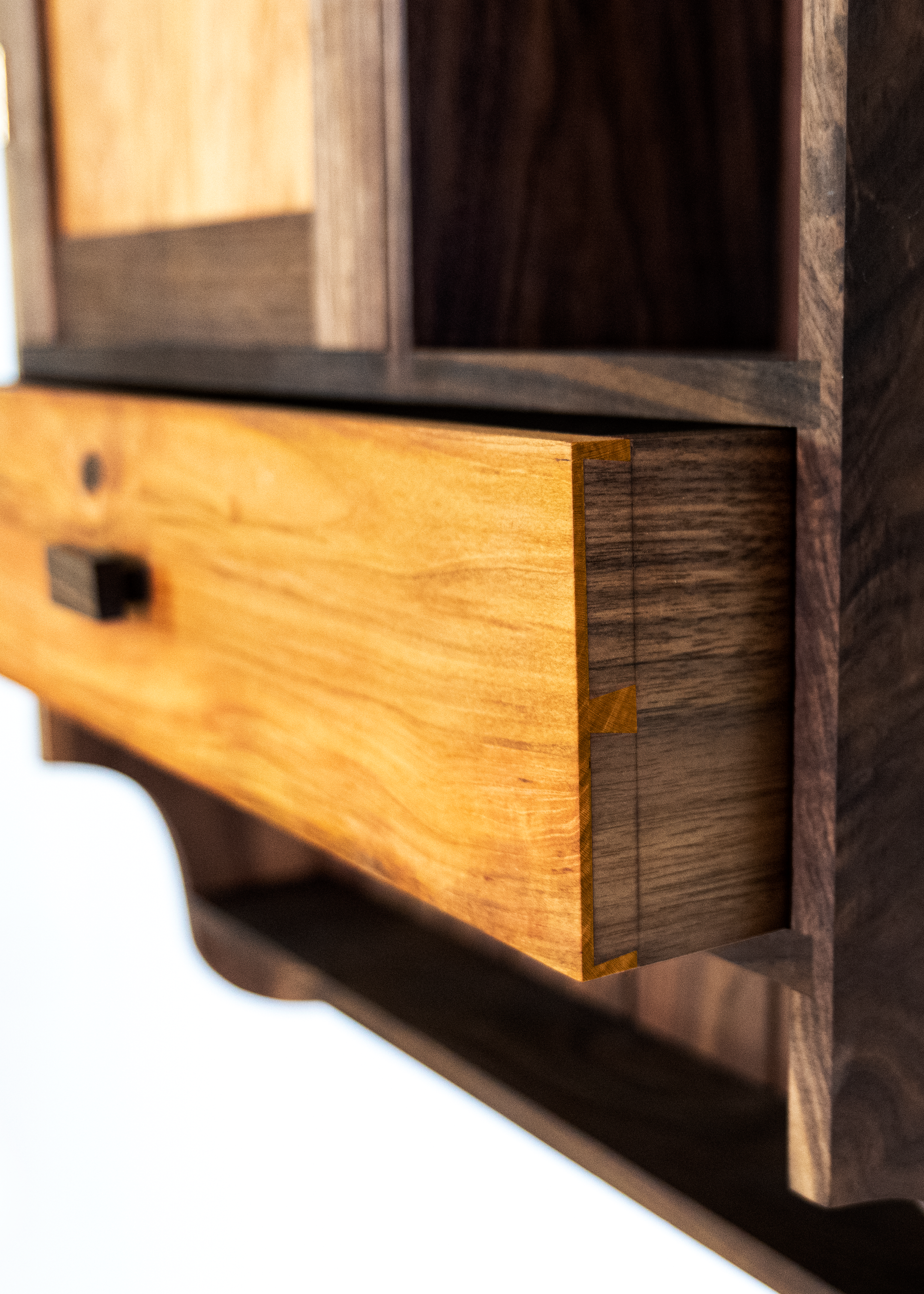Building a Wall Cabinet Using the Golden Ratio
As a woodworker, you know that designing beautiful and functional projects is a delicate balance. Aesthetics are important, but so is making sure your creation is structurally sound. And there are a lot of different ways that pieces can be designed. Really, you can make things as simple or as complicated as you want. But what if there was a way to guarantee that your project would turn out looking awesome, without all the trial and error? Well, there is a way... sort of. It's called the golden ratio, and it's a tried and true method for making things look great.
So that’s what I used to create this wall cabinet. The size of the cabinet and the placement of the drawer, door, and shelves were all based on the golden ratio. Basically, the golden ratio is a special number found by dividing a line into two parts so that the longer part divided by the shorter part is also equal to the whole length divided by the longer part. This number, approximately equal to 1.618, appears often in geometry, art, architecture, and nature. And it turns out, it's also a great tool for designing woodworking projects!
So let’s talk more about how I used the golden ratio and some other design choices like the shaker style tongue and groove door and hand cut half blind dovetails.
And If you're interested in building this wall cabinet, make sure you watch the full build video below!
Why the Golden Ratio Works so Well for Woodworking Projects
The Golden Ratio works so well for woodworking projects because it's a ratio that is aesthetically pleasing to the eye. When we see something that is in proportion according to the Golden Ratio, our brains register it as being "pleasing" or "good." That's why so many designers and architects use the Golden Ratio when creating their works - it's because they know that it will be pleasing to look at. So shifting a shelf on this wall cabinet up or down or even changing the dimensions could really throw off the appearance and turn it from a great project to a good project.
How Can I Use the Golden Ratio in Woodworking?
You can use the golden ratio to design projects that are both beautiful and structurally sound. When two objects have a proportion that matches the golden ratio, they create what is called a "golden rectangle." This shape has historically been considered visually appealing, which makes it ideal for use in woodworking projects.
To use the golden ratio in your project design, start by drawing a rectangle with dimensions that match those of a golden rectangle. Then, draw a line bisecting the rectangle horizontally and another line bisecting it vertically. The point where these two lines intersect is called the "golden mean" or "golden section." This is where you'll want to place your focal point—whether that's a carving, inlay, or other decoration.
So let's take this wall cabinet design. The outer rectangle of the cabinet are the proportions of the golden rectangle. While the drawer and door for the cabinet line up within that golden rectangle. The door panel is yet another area where I took advantage of the golden ratio just to double down on that aspect.
There are a lot of tools out there to help you use the golden ratio in your design process.
Design Choices for the Wall Cabinet
Shaker Style Door
After nailing down the dimensions for the wall cabinet, it was time to think about some of the other design choices like the style of the door and drawer. I went with the shaker style door because I think it complements the modern design nicely. Shaker style doors are a type of door that is made with tongue and groove boards that fit together to create a recessed panel door. Tongue and groove doors offer a unique look that is both stylish and functional. The tongue and groove design allows the doors to fit snugly together, creating a solid joint. This makes tongue and groove doors the perfect choice for doors that will see a lot of use, like in kitchens and bathrooms. And I like this style of door because it has a clean look, and based on my other projects, I think you can tell I am into the “clean” and minimalistic design.
Half Blind Dovetails
As for the drawer, with all of the other small details and intricacies that went into the design of the wall cabinet, I think the half-blind dovetails for the drawer box was a must. There's nothing more satisfying than looking at a well-crafted drawer, knowing that you built it with your own two hands. Half-blind dovetails are one of the most popular methods of joinery and it's a great way to add strength and stability to a drawer while still keeping the aesthetic appeal of traditional dovetails. However, unlike traditional dovetails, only half of the pins are visible when the drawer is assembled.
Wood Selection
The cherry and walnut combination for this wall cabinet really stand out here with the dovetails, and of course with the door. I love the warm tones that are brought out in the walnut from the cherry.
So, whether you're just starting out in woodworking or you've been doing it for years, incorporating the golden ratio into your designs is a great way to create visually appealing projects that are also structurally sound. So grab your pencil and paper and start experimenting with this mathematical concept—you might be surprised at what you come up with. And try incorporating some of these other design elements like half-blind dovetails or shaker doors into your next piece.
And make sure to check out the full video so you can see the whole process in detail!





